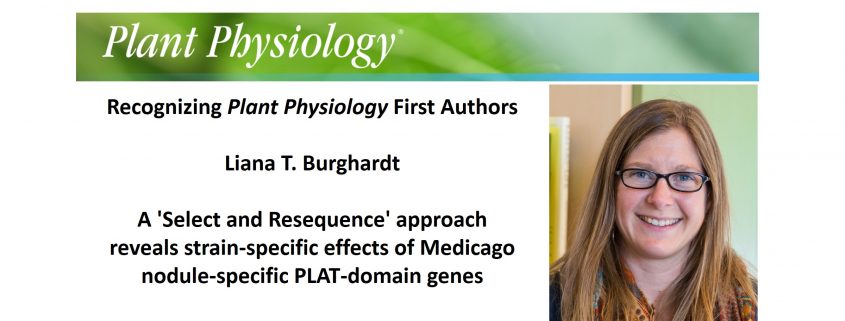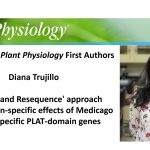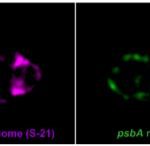Recognizing Plant Physiology first authors: Liana T. Burghardt
Liana T. Burghardt, co-first author of A ‘Select and Resequence’ approach reveals strain-specific effects of Medicago nodule-specific PLAT-domain genes
Current Position: I am a post-doc in the Plant and Microbial Biology department at the University of Minnesota. In Spring 2020, I start my lab as an Assistant Professor at Pennsylvania State University.
Education: I received a Ph.D. in Biology from Duke University in Durham, NC and a BA in Biology from Carleton College in Northfield, MN.
Non-scientific Interests: Cross-country skiing, mountain biking, gardening, cooking, and scientific illustration (aspirational)
Brief bio: In natural and agricultural ecosystems, environments are always changing from day to day, week to week, and year to year. I study how plants (and the microbes that live in and on their roots) respond and adapt to environmental variability. In particular, I use the nitrogen-fixing symbiosis between leguminous plants (e.g., alfalfa) and rhizobial bacteria as a model system. I first studied this relationship while doing a summer REU in Janine Sherrier’s lab at the University of Delaware. I took a detour during my Ph.D. to study and build predictive models of plant life-stage transitions (e.g., germination, flowering) in A. thaliana with my advisor Kathleen Donohue and in collaboration with Johanna Schmitt. For the last four years, together with my advisor Peter Tiffin and fellow postdoc Brendan Epstein, I’ve been developing sequencing methods to measure the genomic-basis of legume-rhizobia interactions. Here, we applied these methods to legume mutants generated by my co-first author Diana Trujillo. Ultimately, I am interested in leveraging evolutionary and ecological theory and advances in sequencing technology to better manage mutualistic interactions in natural and agricultural systems in a changing climate. Please visit my website — lianaburghardtlab.com.




